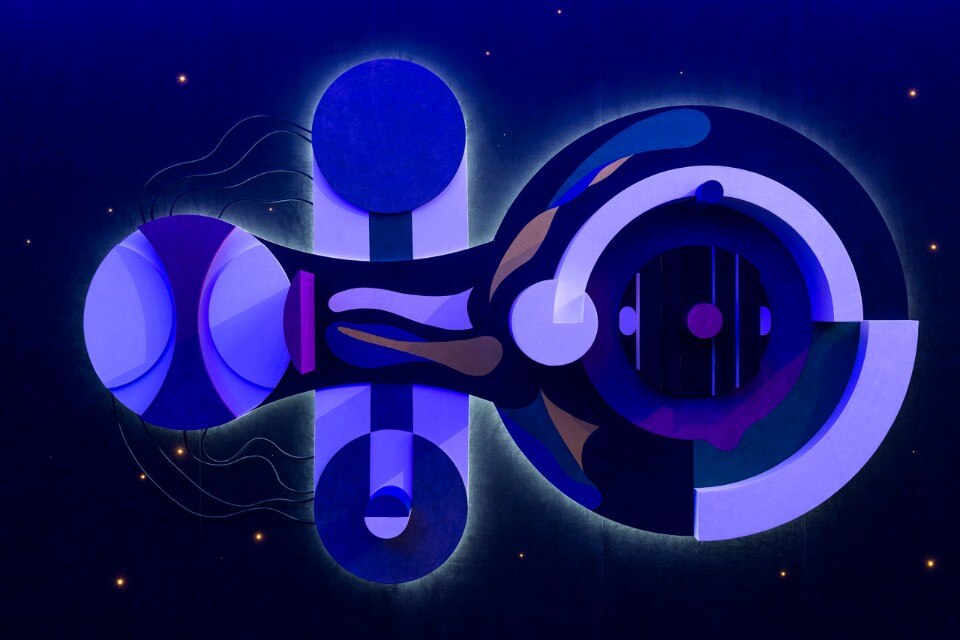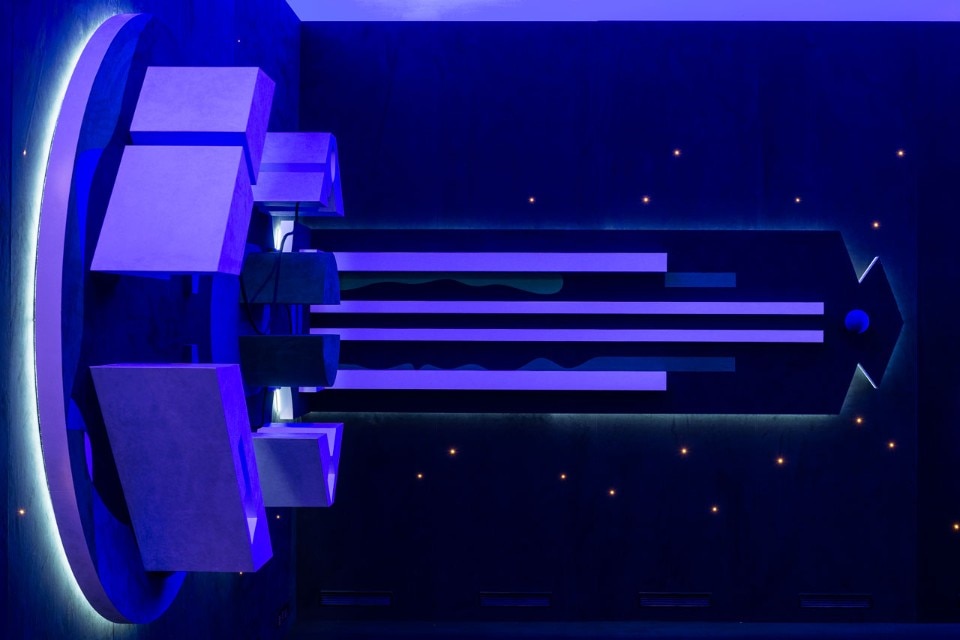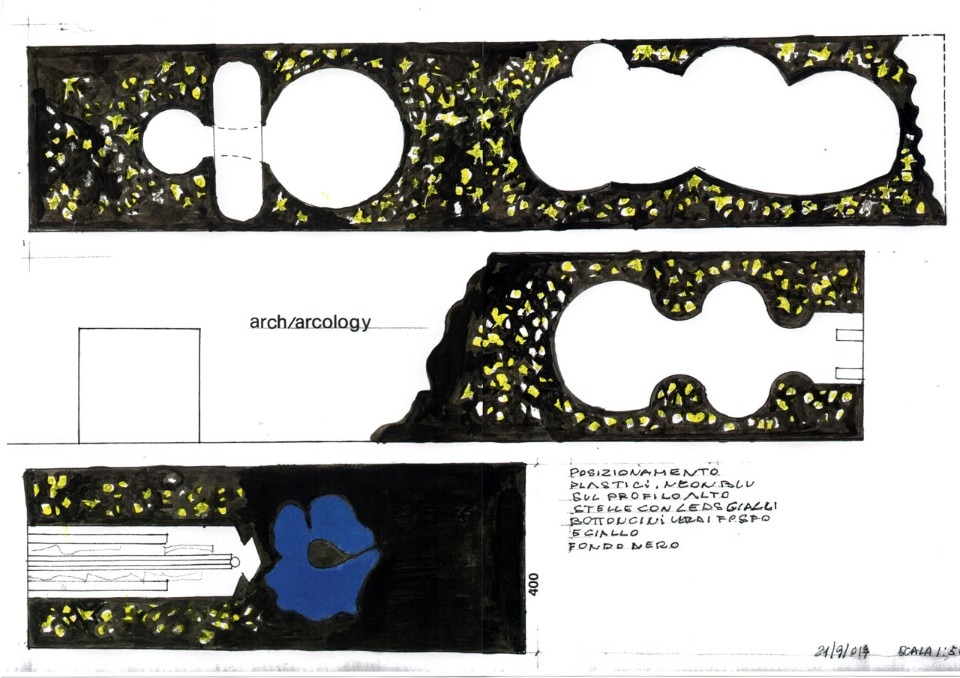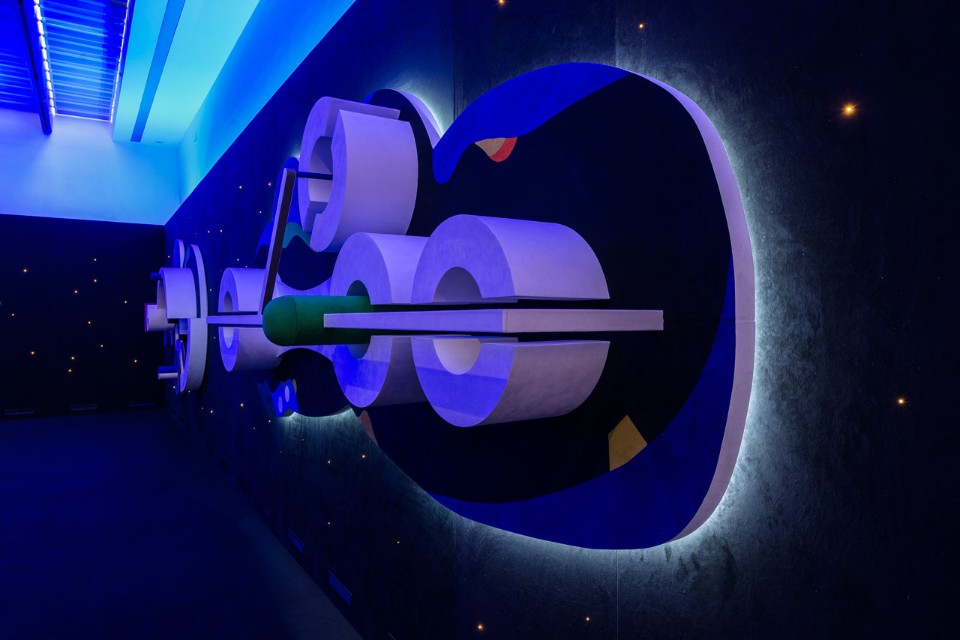“Light is the path of the stars/Light is the cosmogonic alphabet to read the galaxies”, are the first lines taken from the work Light Trees, composed by Nanda Vigo in 1983 and reproduced by Dominique Stella in the essay Light Trek (published by ABC-Arte in 2014), indicating light as a constant presence in her work. A journey through light which Nanda Vigo now reproduces in the depths of the MAXXI, with “Arch/Arcology”, the designing of a room in the museum as the interpretation of the visionary escapisms by Paolo Soleri, taking from the museum’s permanent collection and making use of the versatile nature of Alcantara.
With “Arch/Arcology”, Nanda Vigo opens the new series of Studio-Visits, an installation forming part of the Alcantara-MAXXI Project, an ongoing co-production between the company and the museum, which brings together the archives, contemporary art and museography as a single act of knowledge, in which “the study”, according to the curator Domitilla Dardi, “is both environment and research”. Nanda Vigo has brought forth from the archives the utopian systems outlined by Paolo Soleri for ecological habitats of zero environmental impact.
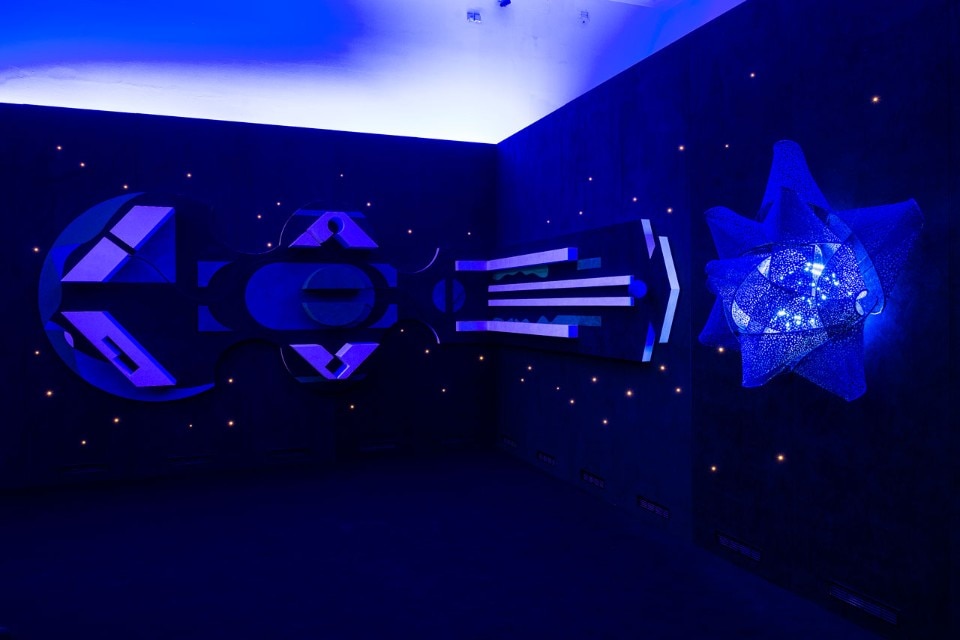
 View gallery
View gallery

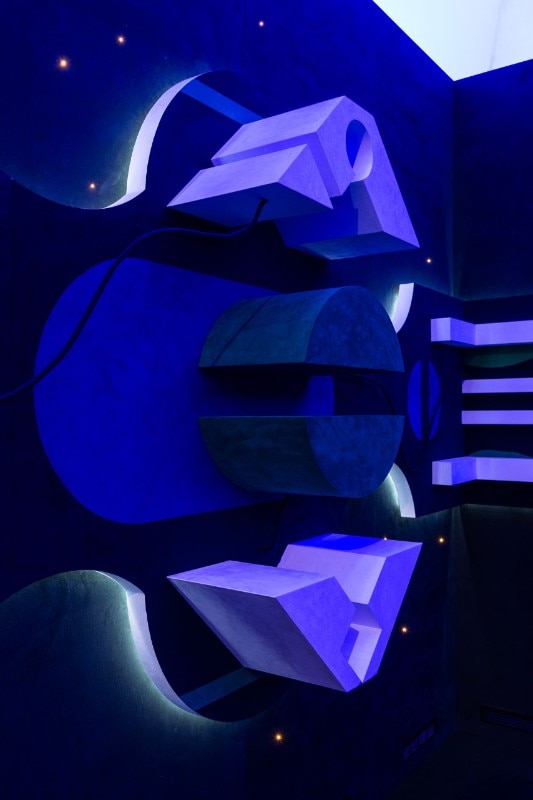
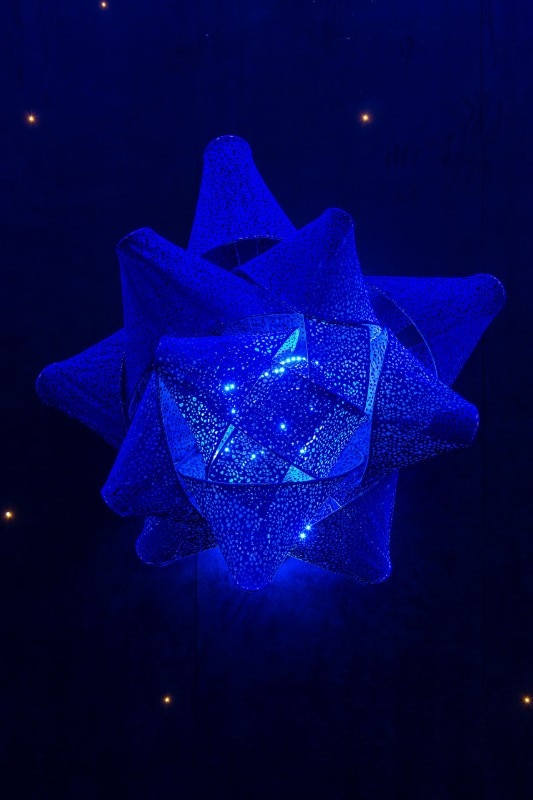
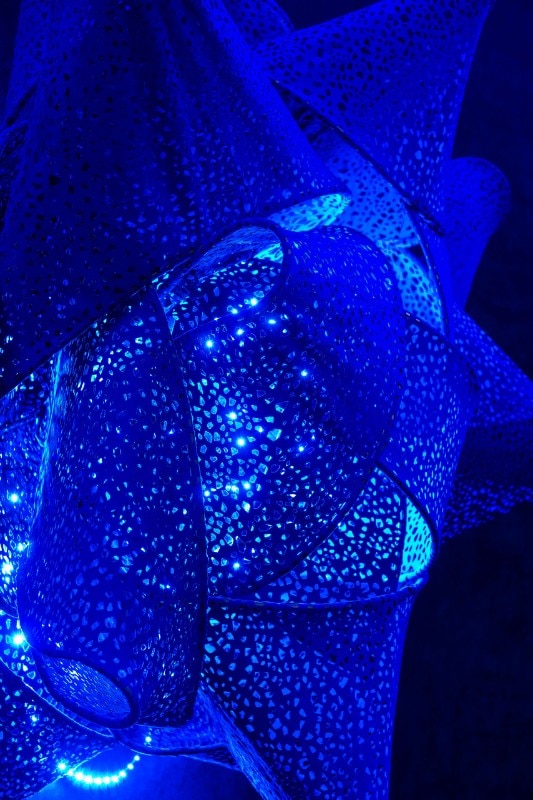
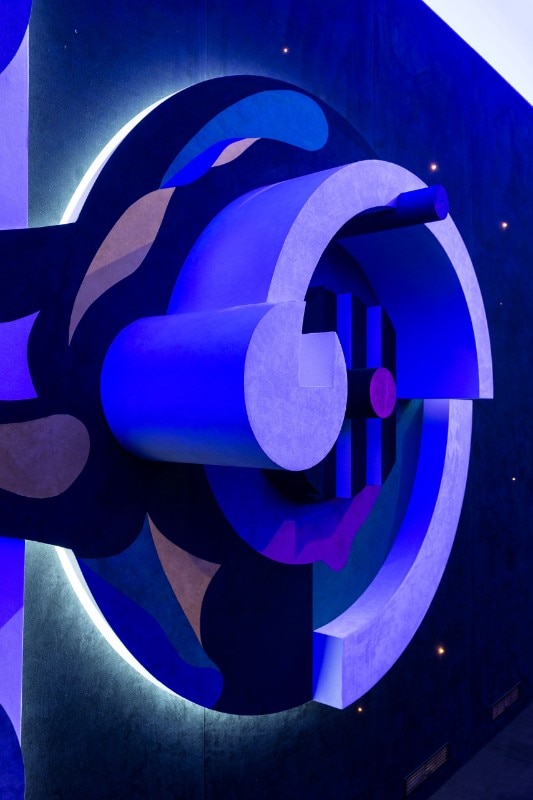
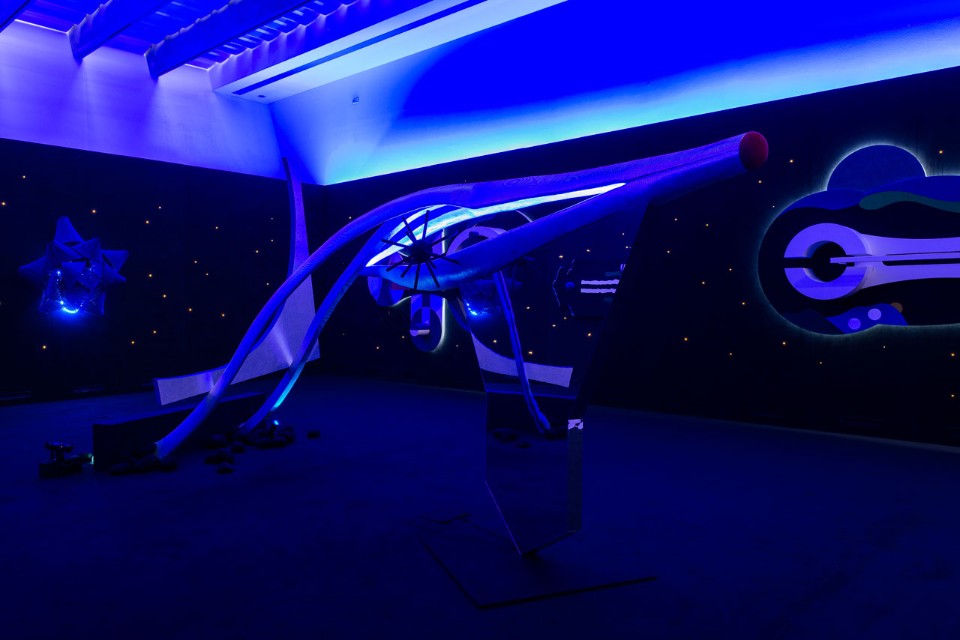
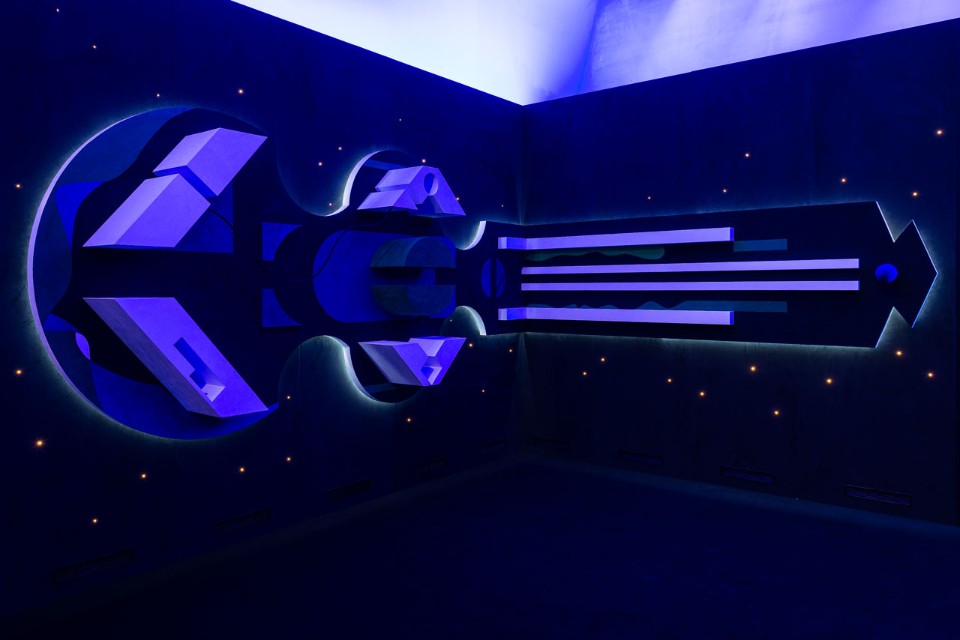
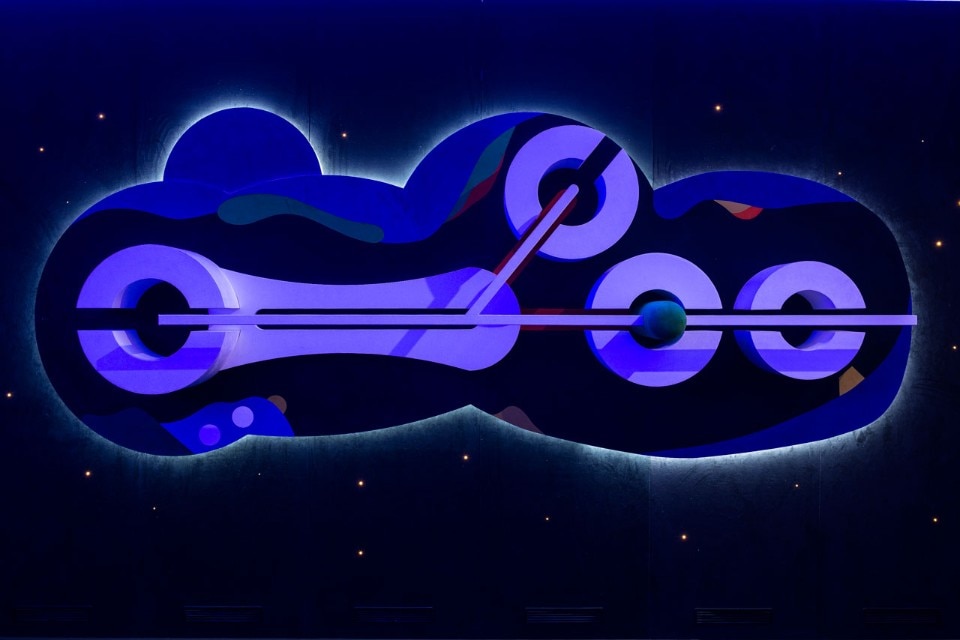
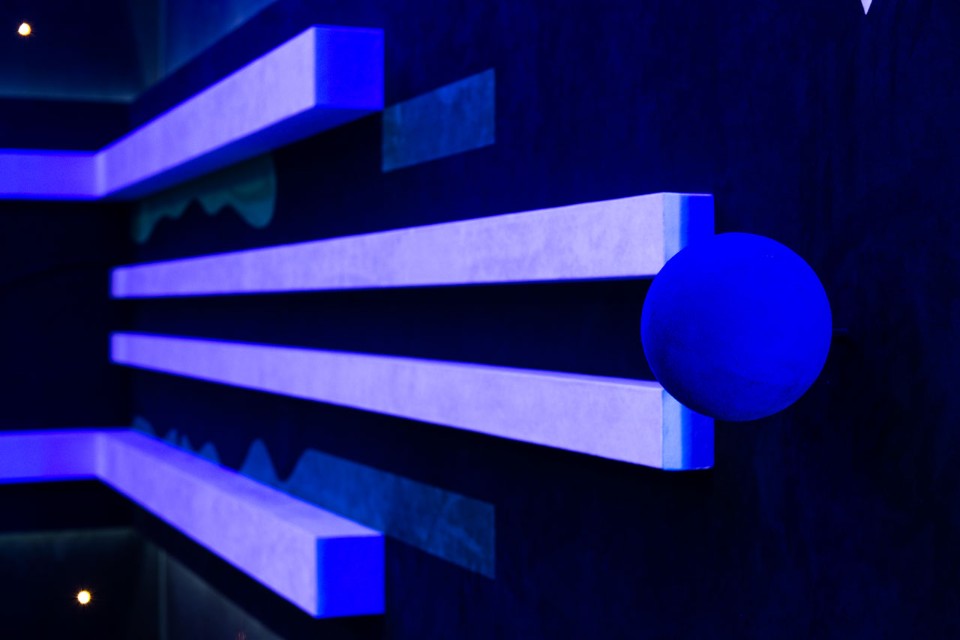
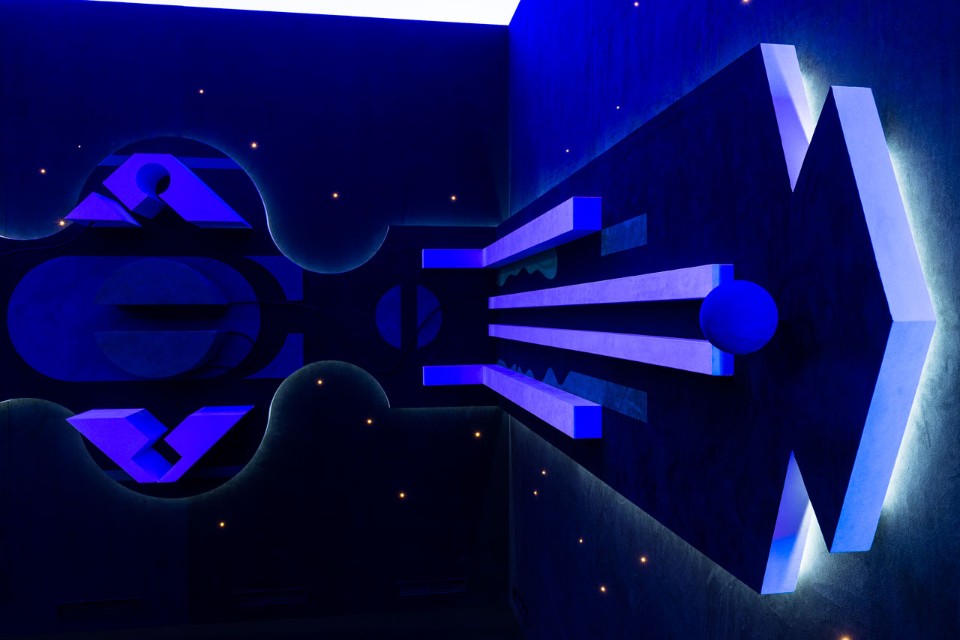
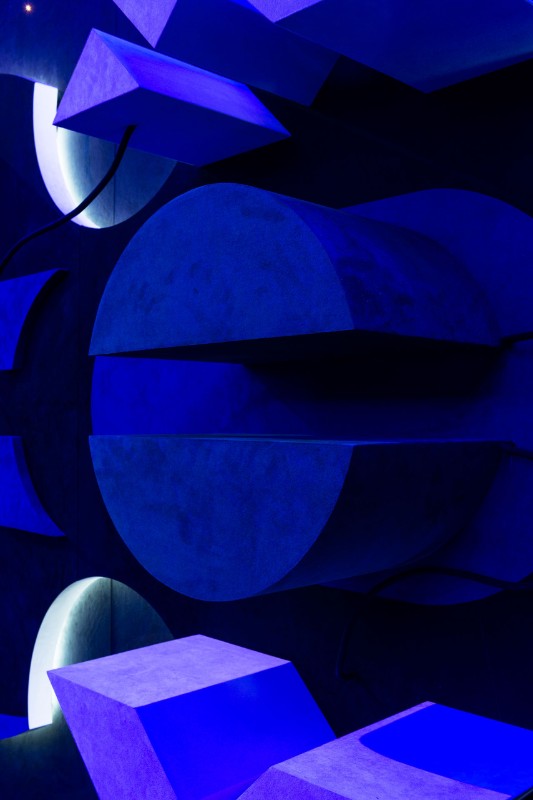
“I was attracted by that which I call a zero-gravity process”, explains Nanda Vigo, “as a disposition to the project which brings together my research and that of Soleri, an affinity which has led me to examine his unfinished projects and develop them in 3D, to demonstrate their potential feasibility, beyond the idea of utopia. Soleri’s visions are energetic cues which can take us beyond the current stalemate in which contemporary cities find themselves, in which they risk being reduced to living archaeology. This tension between reality and imagination is something I have stigmatised in the pairing of Arch/Archology”.
A studio-space which Nanda Vigo has covered in Alcantara, a connective membrane, a boiserie in synaesthetic skin, a continuous strip of writing paper, inspired by the long scrolls designed by Paolo Soleri. And, just like in Arcosanti, there is no horizon. Nanda Vigo suspends Paolo Soleri’s forms in the full emptiness of a zero-gravity artificial universe. The solid extrusions based on the flat drawings of Soleri serve as Nanda Vigo’s imagined development of a number of his unfinished urban expressions. Shapes covered in Alcantara which create a continuous surface with the wall, where the orientation of the models is turned by 90°, in such a way that in the unity between figure and background, accentuated by the depth of a micro-granular black, the perimeters of the room dissolve into a highly-architectural solar system.
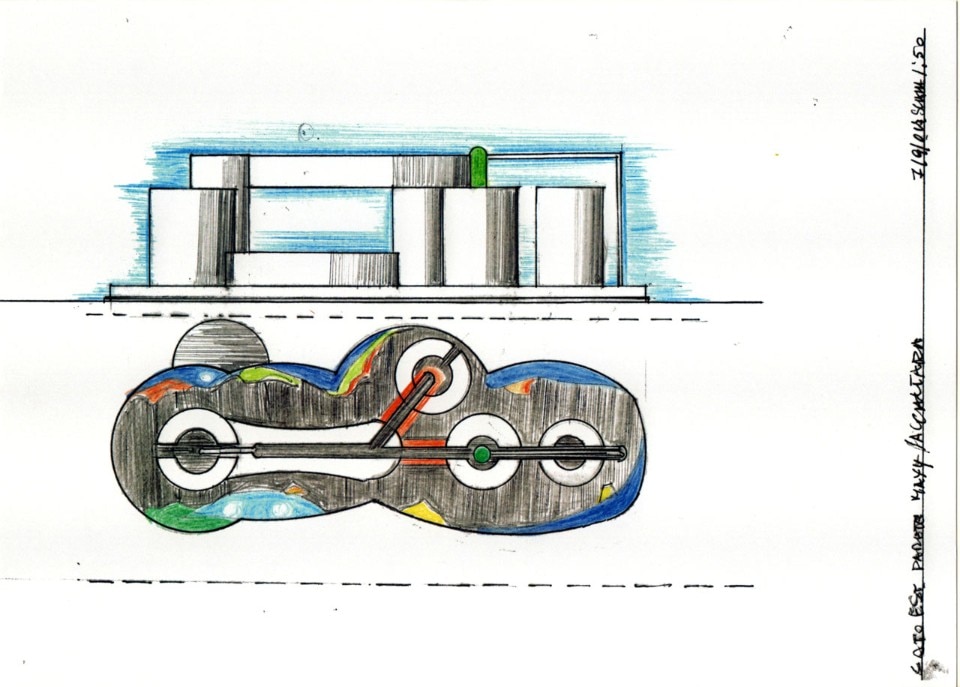
 View gallery
View gallery

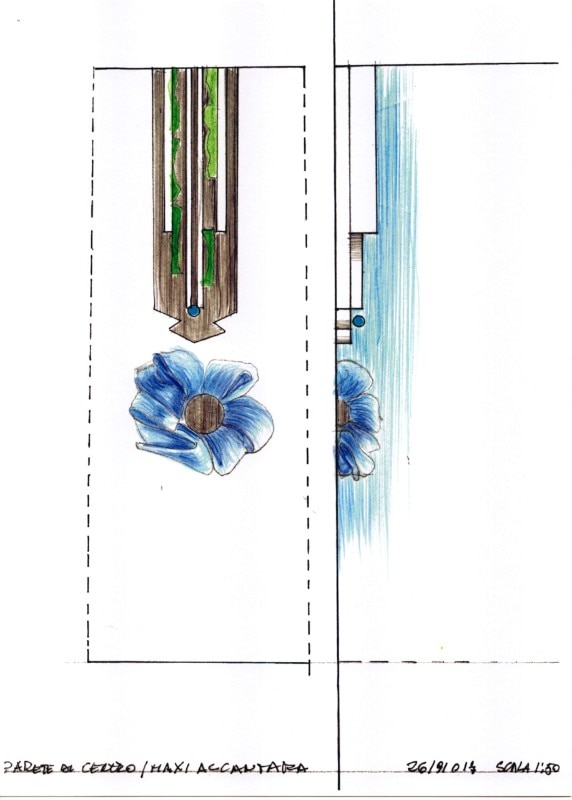
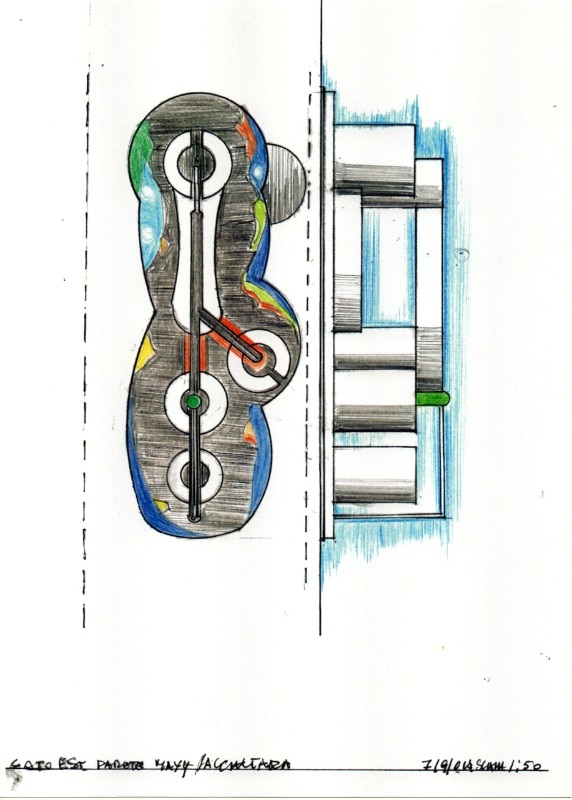
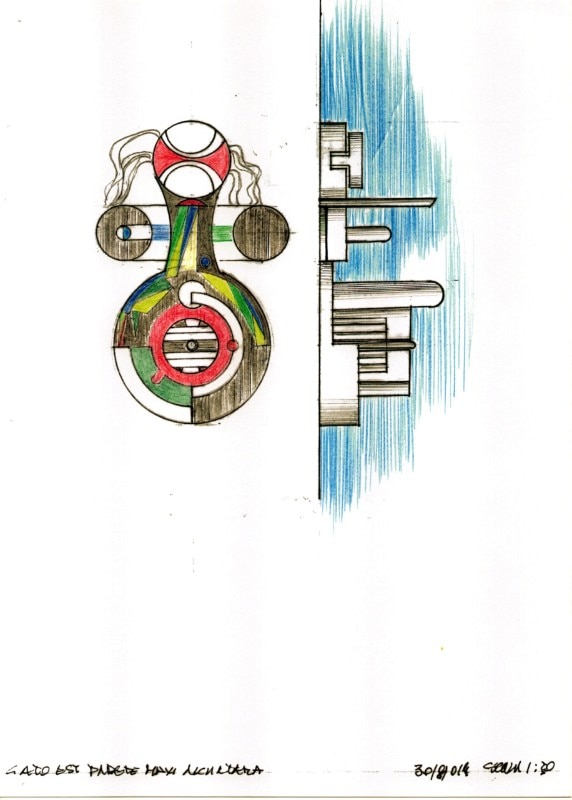
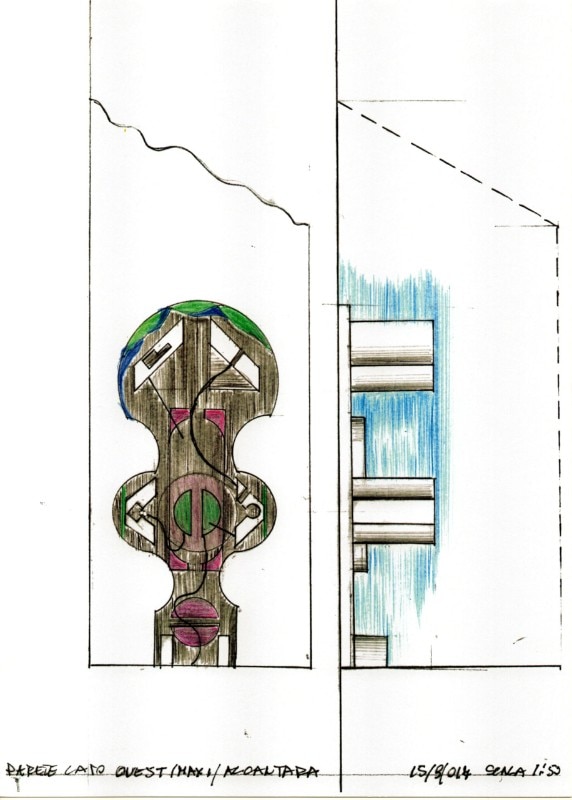
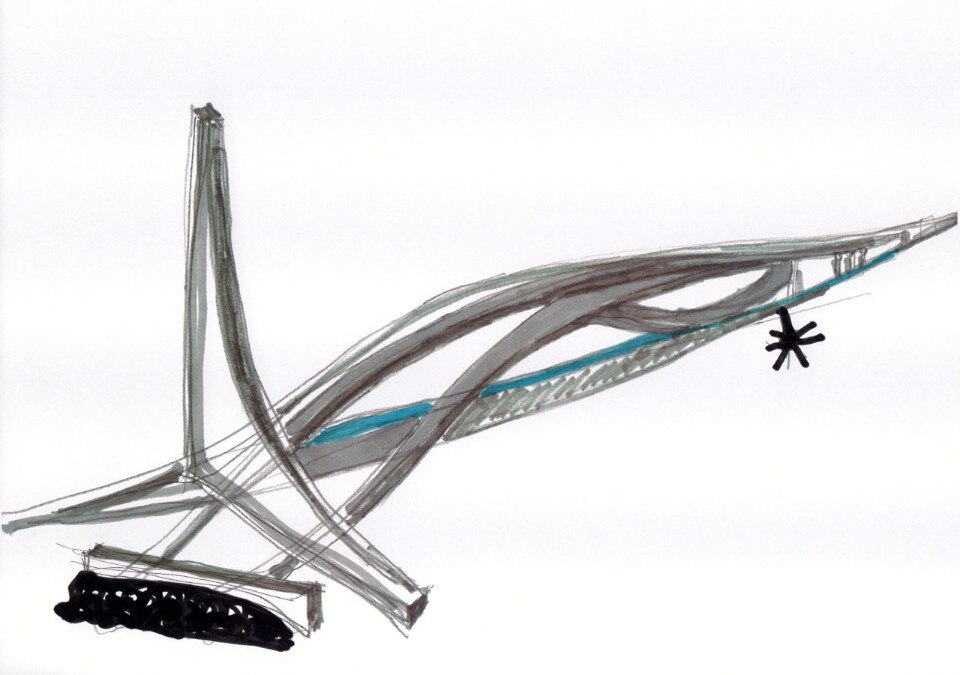
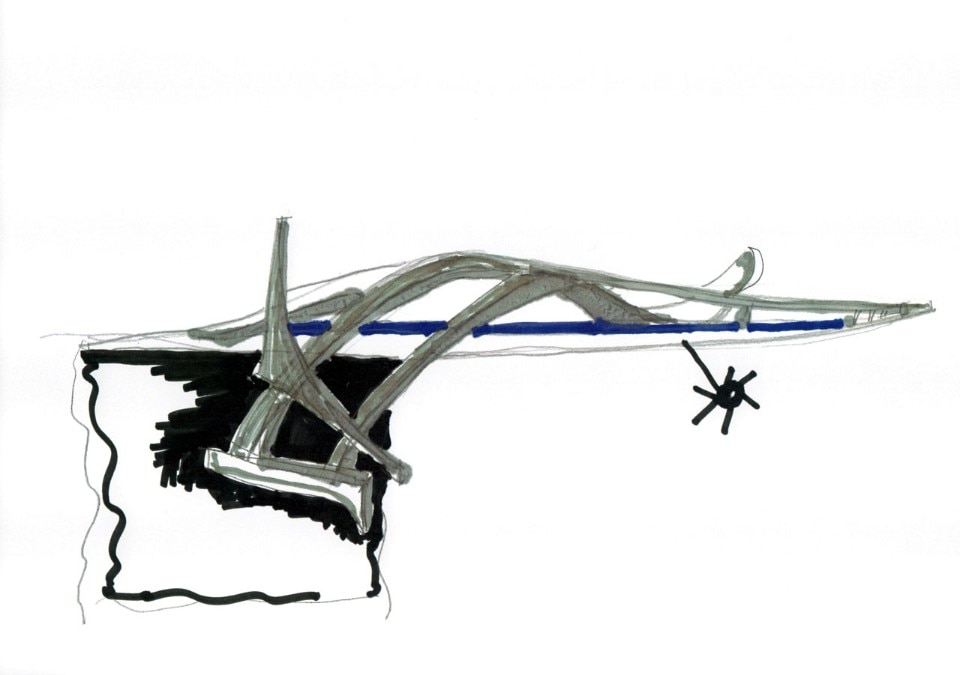
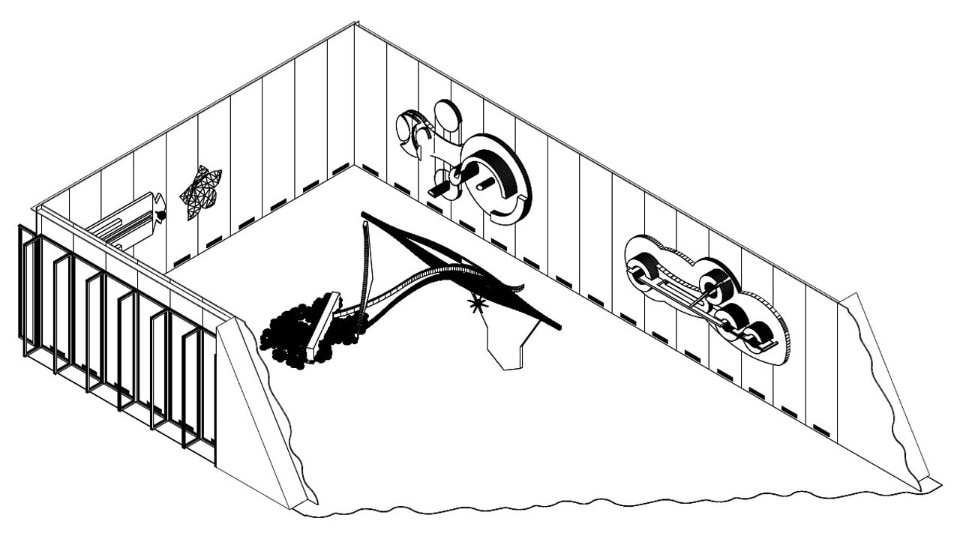
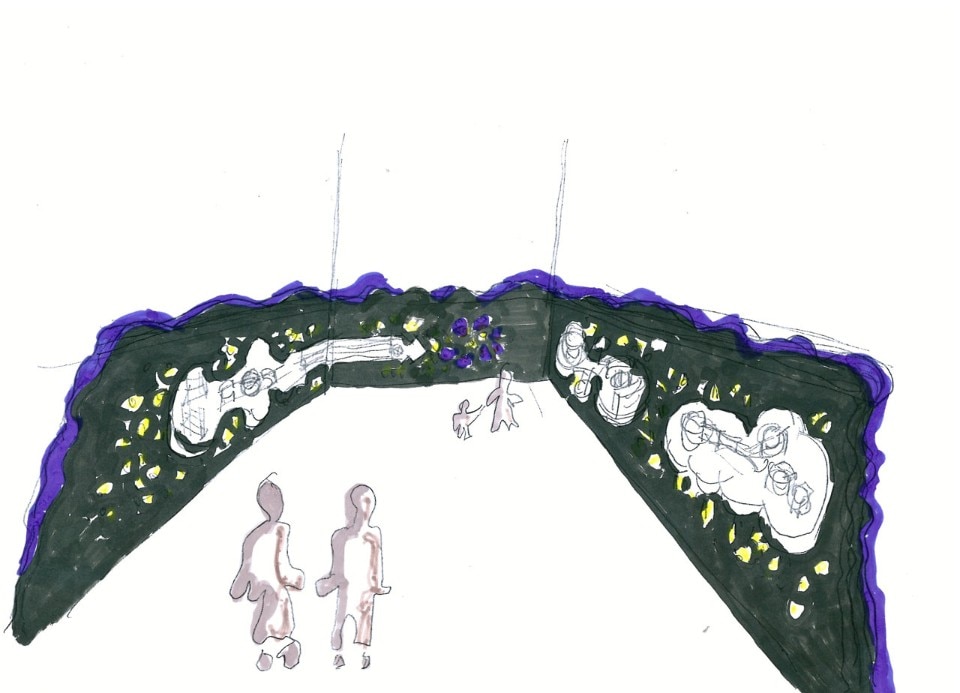
Soleri’s plants blossom like satellite micro-cities: “an anti-gravity system for stellar poetry which lessens the impact of humankind on the cosmos”, recreated in “Arch/Arcology” with “phosphorescent buttons and LED stars”, piliferous bulbs which break through the fibres of the dark matter of Alcantara, supporting the principle of the interior as a complete work of art, a design matrix. Surrounding-object-viewer come together “into something which is as open as possible to a complete fracture” - writes Barbara Pastor in the book Nanda Vigo for the Prontuario series by Abitare Segesta (2006) - with regards to the all-encompassing walls which serve as tactile-visual enclosures, as “stimulators of space, in the white/black/yellow/blue monochrome interiors”; in the Casa sotto la foglia with Gio Ponti; in the Interno su teorema by Vincenzo Agnetti; in the environments with Lucio Fontana; and in the Remo Brindisi museum-home.
At the MAXXI, the emergences from the continuous surface and the fracturing of light create a study-wall which reveals the mechanisms between art and architecture: “the blackness dotted with shining stars is what I mean by cosmic dimension, an “exterior” beyond the atmosphere”. Here, Alcantara, a non-woven fabric, is used as a structural, nervous, neurological and porous bond, which connects the archive, the museum and the city through delicate vibrant light effects, creating the impression of an uninterrupted surface, without perspective. A sensation which is similar to that stimulated by the translucent, silvery film from which hair, skin and background blossom as though it were a single screen, in the portrait chosen by Nanda Vigo for this article. Outlined in Alcantara, the systems placed by Soleri on a velvety graphite-black orbit around the plastic representation of the single cantilever bridge: from the Arabic al-qantara, a bridge between the natural and the artificial.
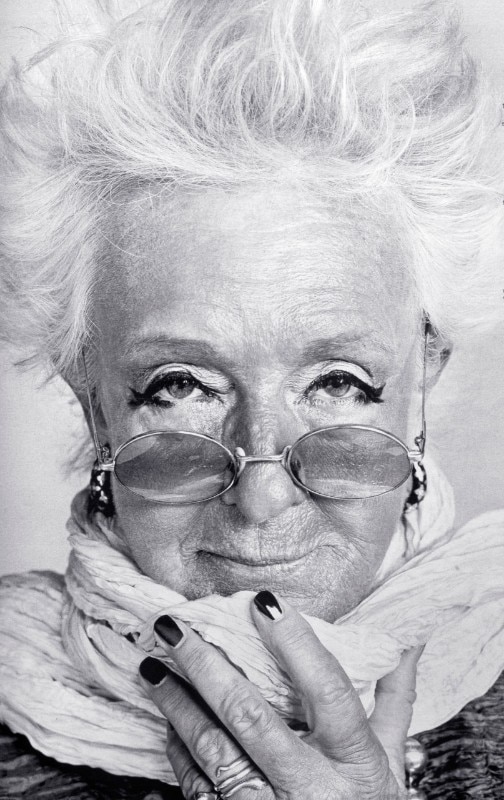
The set-up designed by Nanda Vigo is an organological mechanism, under biotic tension, autopoiesis, which acts as a link between the urban and the natural, provoking free associations between architecture/biology/universe, even going beyond Arch/Arcology. Thus, the installation may lead viewers to the archive, to see Soleri’s original plates, discovering that some of his articulations may, although they are very different, appear close to the architectural connections designed by Francesco Lo Savio, which were recently exhibited at the MART in Rovereto. In both cases, the connection between architecture and organism resonates like the expansion of that which we can define as “fugitive freedom”, as a reference to the American Frank Lloyd Wright.
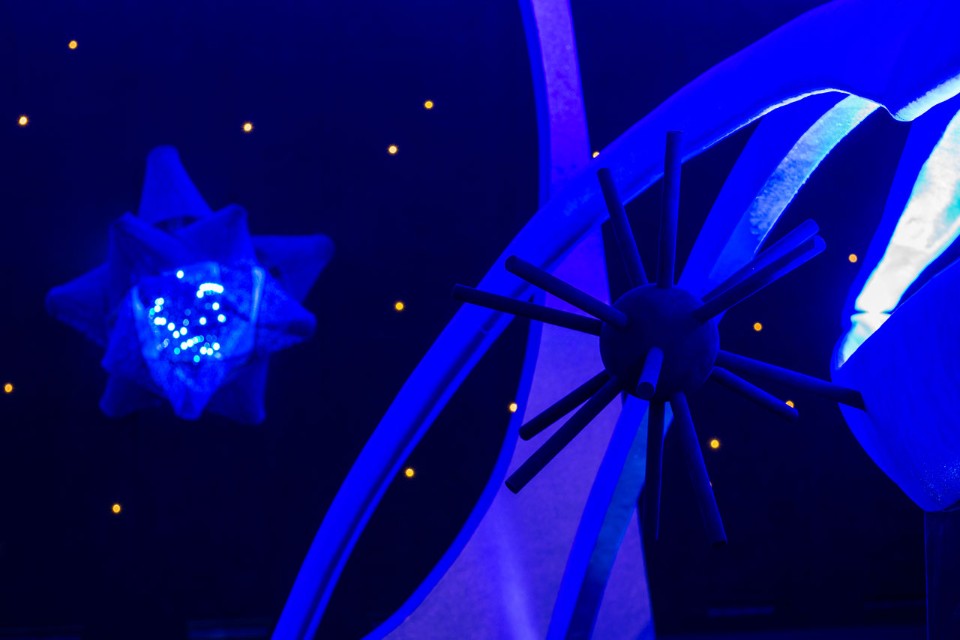
 View gallery
View gallery

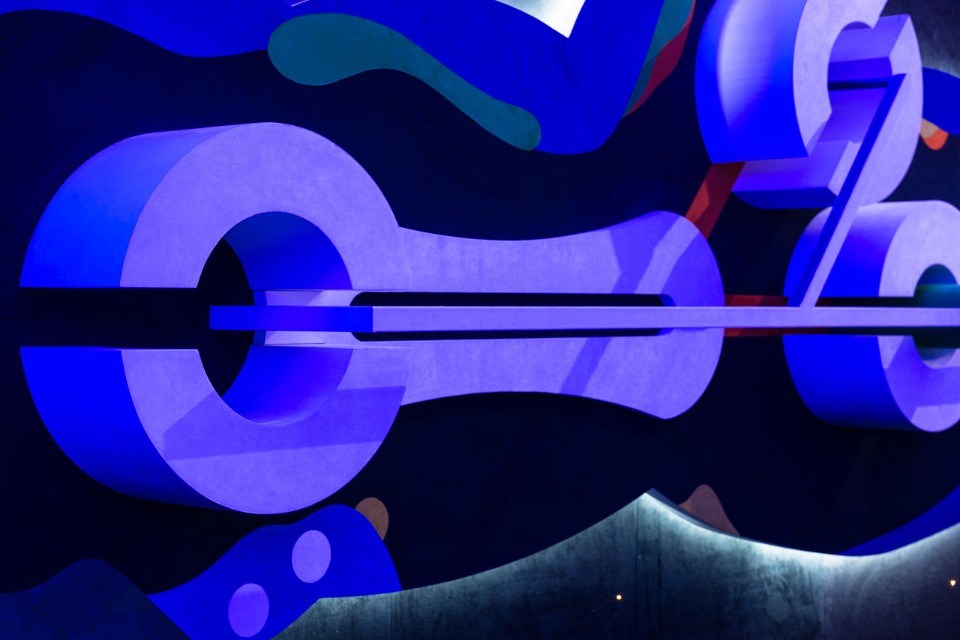
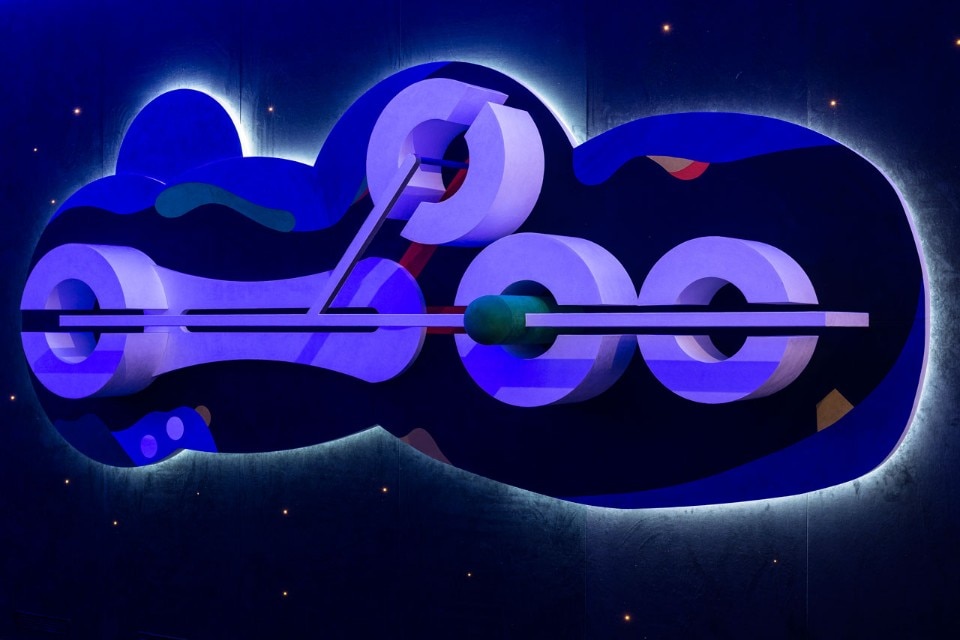
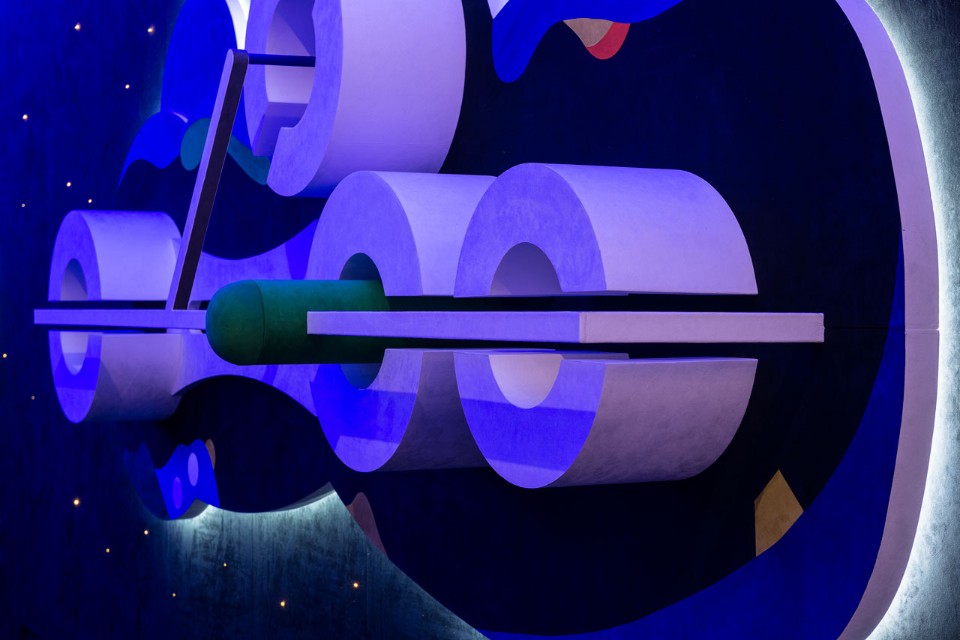
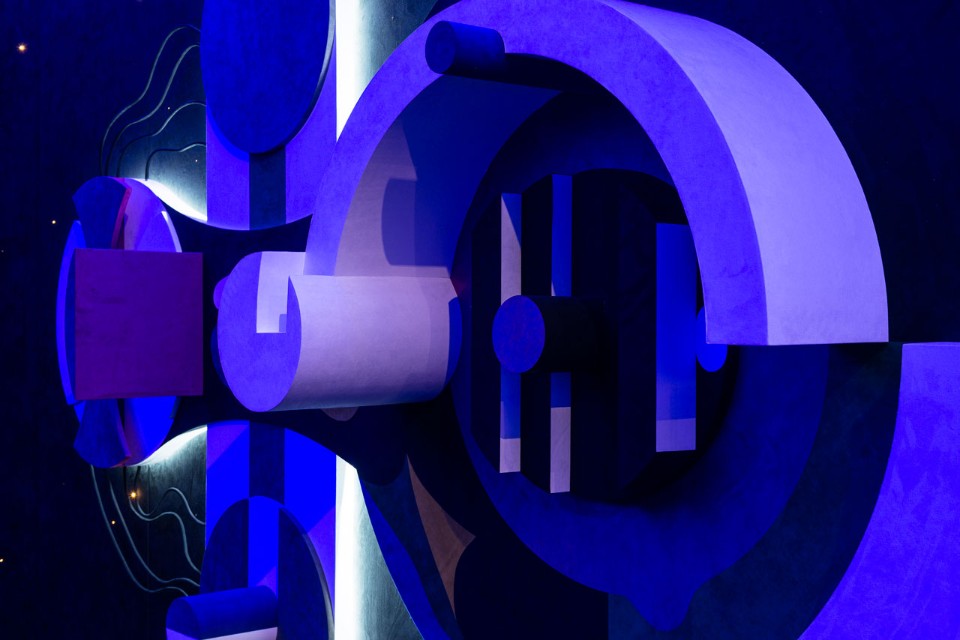
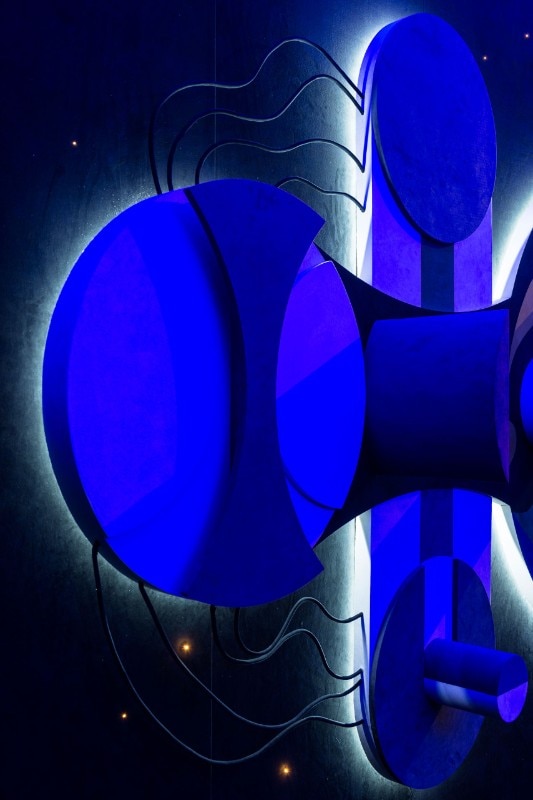
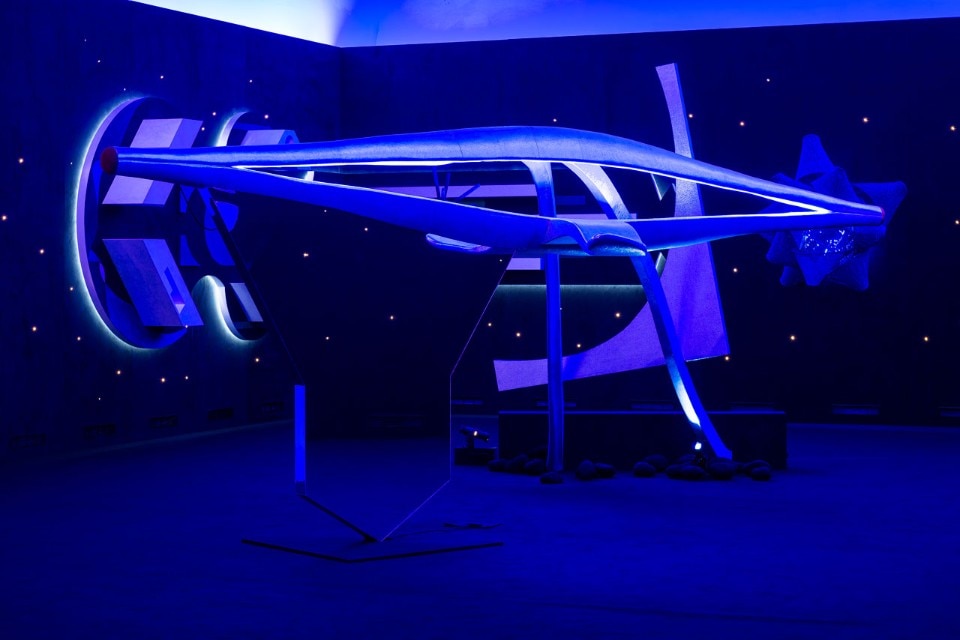
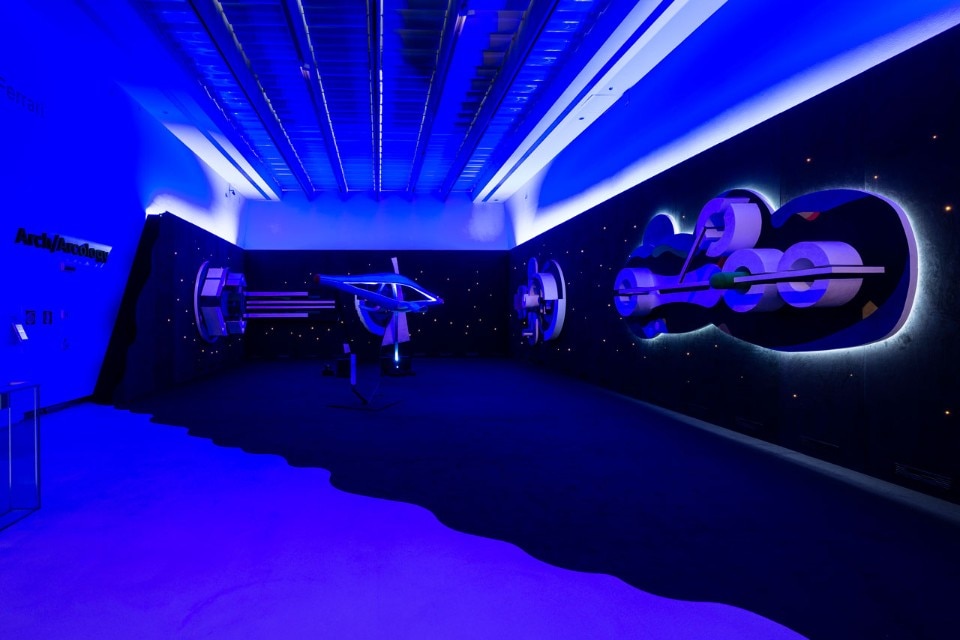
Nanda Vigo handles “solid light”, from wanderings through Flash Gordon’s Sky City, which characterised the readings of her youth. In light, a constant pattern in Nanda Vigo’s work and studies, I recognise the signs of a persistent use of art as an act of female emancipation. I therefore see light as stimulating writing, and I think back to the light spaces in Light Trees/Light Trek: “Lights are the infinite spaces of the chakras of the mind and heart”. What is the contribution of light in the provoking of pleasure, the joy of inhabiting? In a conversation on “Arch/Arcology”, Nando Vigo describes the mutation of light as “mental and sensorial comfort”. Friction, disassociation, petites-morts which unite soft curves and blunt objects, fluffy surfaces and cold contact, in a view of art and architecture which oscillates between the estrangement of Meret Oppenheim’s grafts and the rarefied intimacy of Corrado Levi.
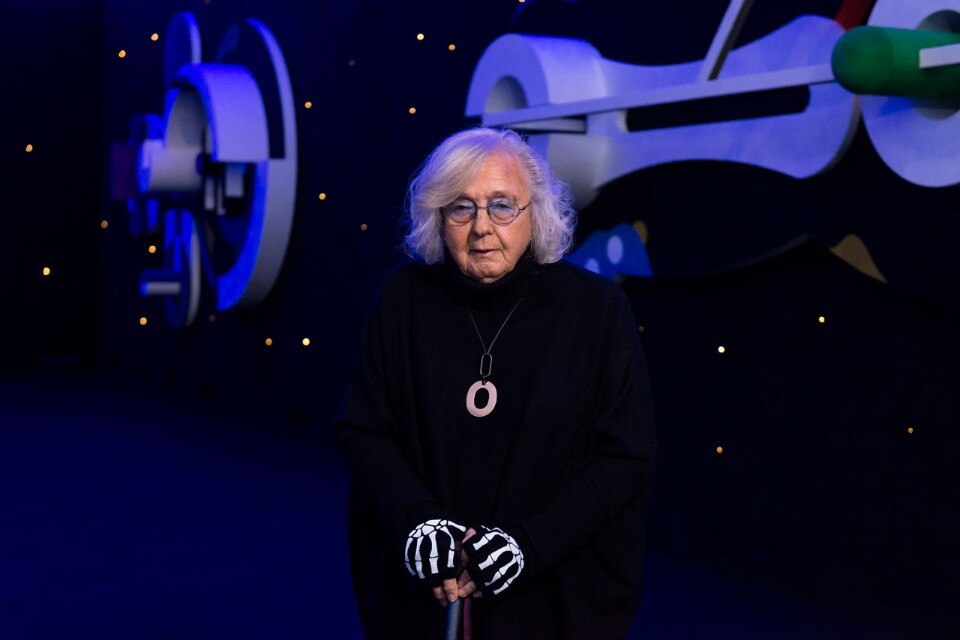
With “Arch/Arcology”, Nanda Vigo manipulates the Soleri-MAXXI-Alcantara triad, forming her studio-visit where “black - drawing on Alain Badiou - symbolises both absence and excess”, “light - with reference to Freddy Paul Grunert - is a carrier of information and an interruption of the legacy of destructive waves”, and, as Simone Weil wrote, the triumph of art is that it leads to that which lies beyond: to life, with the full awareness of the conditions that tie the mind to the world.
- Exhibition title:
- Nanda Vigo. Arch/Arcology
- Opening dates:
- 2–25 February 2018
- Venue:
- MAXXI
- Address:
- via Guido Reni 4/A, Roma
- Curator:
- Domitilla Dardi


